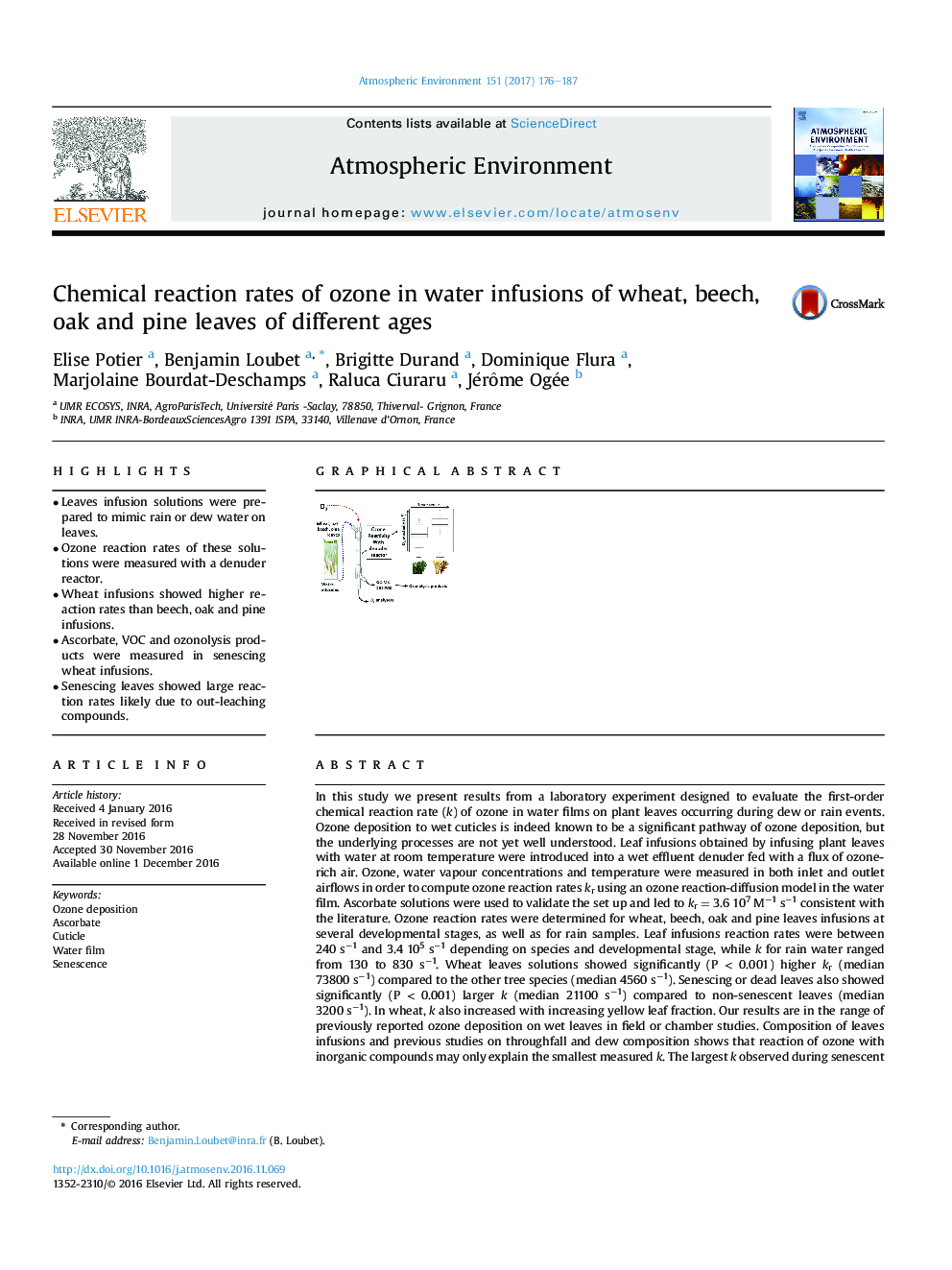| کد مقاله | کد نشریه | سال انتشار | مقاله انگلیسی | نسخه تمام متن |
|---|---|---|---|---|
| 5753218 | 1620323 | 2017 | 12 صفحه PDF | دانلود رایگان |
- Leaves infusion solutions were prepared to mimic rain or dew water on leaves.
- Ozone reaction rates of these solutions were measured with a denuder reactor.
- Wheat infusions showed higher reaction rates than beech, oak and pine infusions.
- Ascorbate, VOC and ozonolysis products were measured in senescing wheat infusions.
- Senescing leaves showed large reaction rates likely due to out-leaching compounds.
In this study we present results from a laboratory experiment designed to evaluate the first-order chemical reaction rate (k) of ozone in water films on plant leaves occurring during dew or rain events. Ozone deposition to wet cuticles is indeed known to be a significant pathway of ozone deposition, but the underlying processes are not yet well understood. Leaf infusions obtained by infusing plant leaves with water at room temperature were introduced into a wet effluent denuder fed with a flux of ozone-rich air. Ozone, water vapour concentrations and temperature were measured in both inlet and outlet airflows in order to compute ozone reaction rates kr using an ozone reaction-diffusion model in the water film. Ascorbate solutions were used to validate the set up and led to kr = 3.6 107 Mâ1 sâ1 consistent with the literature. Ozone reaction rates were determined for wheat, beech, oak and pine leaves infusions at several developmental stages, as well as for rain samples. Leaf infusions reaction rates were between 240 sâ1 and 3.4 105 sâ1 depending on species and developmental stage, while k for rain water ranged from 130 to 830 sâ1. Wheat leaves solutions showed significantly (P < 0.001) higher kr (median 73800 sâ1) compared to the other tree species (median 4560 sâ1). Senescing or dead leaves also showed significantly (P < 0.001) larger k (median 21100 sâ1) compared to non-senescent leaves (median 3200 sâ1). In wheat, k also increased with increasing yellow leaf fraction. Our results are in the range of previously reported ozone deposition on wet leaves in field or chamber studies. Composition of leaves infusions and previous studies on throughfall and dew composition shows that reaction of ozone with inorganic compounds may only explain the smallest measured k. The largest k observed during senescent are most likely due to reaction with organic material. This is confirmed by LC-MS measurements which showed detection of ascorbate and VOCs as well as the reaction products of ozone with these compounds.
158
Journal: Atmospheric Environment - Volume 151, February 2017, Pages 176-187
